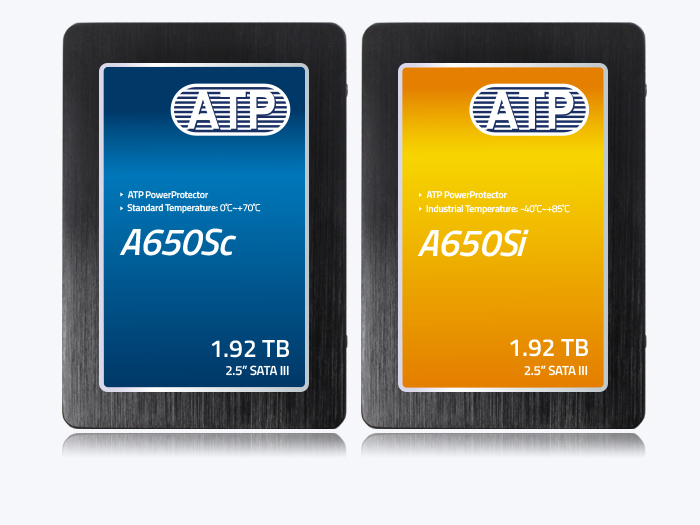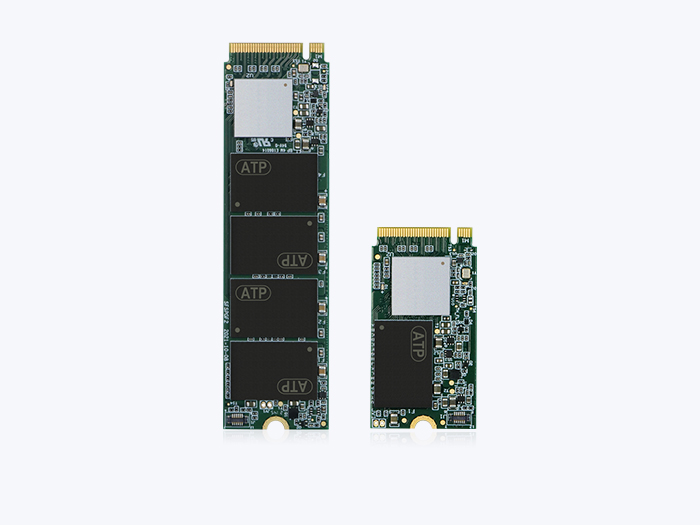SLC Cache Enhances Read/Write Performance of ATP’s 3D TLC SSDs
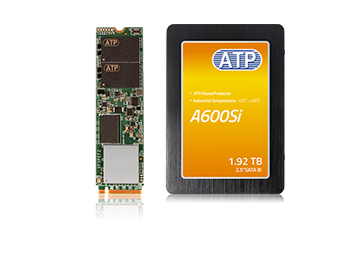
Demand for more data storage will continue, as the world increasingly becomes data driven. Thanks to 3D NAND architecture, storage media are breaking the technological limitations of 2D (planar) NAND by delivering higher storage density without increasing footprint, resulting in lower cost per bit. Additionally, by allowing for a more relaxed NAND lithography that reduces cell-to-cell interference, drives based on 3D NAND architecture have higher reliability, better read/write performance and longer endurance.
These important technological developments have resulted in 3D NAND-based triple level cell (TLC) storage media to gain wide use and acceptance even in mission-critical industrial applications that demand not only high-density storage but also reliable performance and long service life.
To further enhance the performance of 3D TLC, ATP solid state drives (SSDs) and modules use single-level cell (SLC) cache.
What is SLC Cache?
SLC refers to a type of NAND flash that stores only one bit of data per cell. It performs the simplest operation among other flash storage types; hence, it writes data at faster speeds, consumes less power and has higher endurance. The main drawback, however, is that it has lower density and costs more per gigabyte of flash.
SSDs based on 3D TLC, on the other hand, cost lower per GB and can store more data but may suffer from slow read/write performance because it stores three bits of data per cell. This slowdown is most noticeable in SSDs without DRAM cache.
ATP addresses this problem by reserving a portion of the drive that acts like SLC. This portion is called “SLC cache.” It is not the same as “SLC NAND” but behaves like it by storing only one bit of data to enhance the SSD’s read/write performance.
The following graphic shows a comparison of NAND flash types, showing the pros and cons of each:
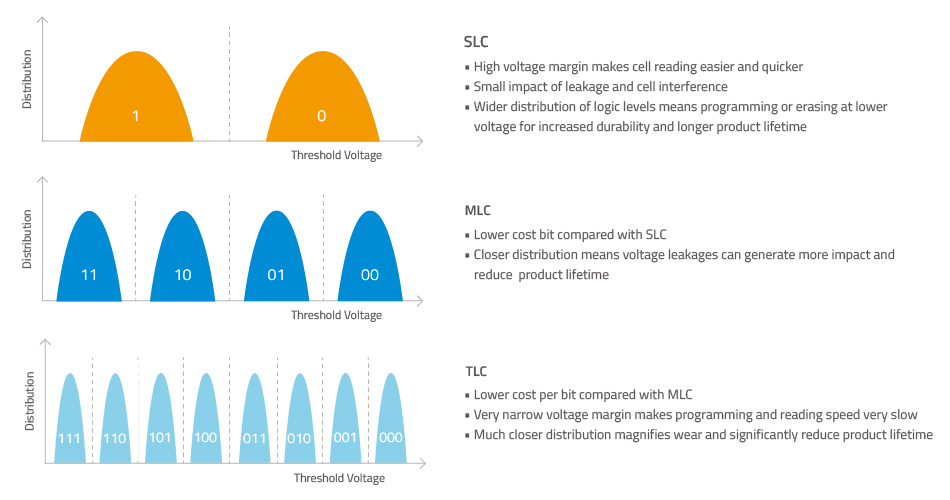
Types of SLC Cache
There are two types of SLC cache: static and dynamic. Whether an SSD uses static or dynamic cache depends on the firmware algorithm.
- Static Cache. As its name implies, the size of the assigned area is fixed. The main advantage is that there is a guaranteed area allocated for SLC cache. This space is disabled only when the rest of the TLC is fully utilized. However, since only a specific area is assigned for SLC cache, such area will sustain more intensive reads and writes, resulting in higher P/E cycles, which could in turn affect the drive’s endurance.
- Dynamic Cache. In contrast, dynamic cache refers to an area that is not fixed. The key advantage is that wear leveling is much more uniform across the entire drive. The disadvantage is that, due to its size flexibility, the cache size is not guaranteed.
The following table provides a summary of the pros and cons of the two types of SLC cache.
Table 1. Comparison between static and dynamic SLC cache
SLC Cache vs. Direct TLC Write
Caching with built-in dynamic random-access memory (DRAM) allows storing small writes and flushing them to the SSD as one big write, thus speeding up read/write performance and preventing write amplification. However, due to cost considerations, many TLC-based SSDs are DRAM-less, resorting to “direct TLC write.” Since DRAM is much faster than NAND flash, these DRAM-less SSDs may have the cost benefit but must compromise on performance.
To resolve the slow read/write performance of TLC SSDs, ATP uses SLC cache. The size of this space depends on the capacity of the SSD. With the SLC cache space, the SSD’s read/write performance is comparable to that of SLC NAND as long as the space is not yet fully utilized.
When the SLC cache is full, the firmware (FW) starts background garbage collection to clean out the cache. At the same time, the system continues to send data to the drive while garbage collection is in progress, thus affecting the drive's performance.
The succeeding graph and table provide a comparison between SLC cache and direct TLC write.
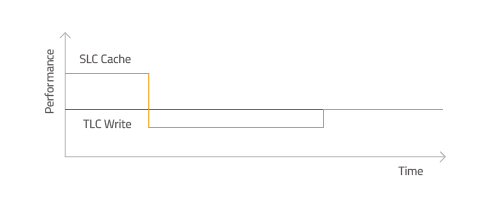
Figure 2. SLC Cache vs. TLC Write. For SLC cache, performance is good at the beginning but drops once the SLC cache is depleted, while the performance of TLC write remains consistent.
Table 2. Comparison of SLC cache and direct TLC write
Conclusion: Next-Generation 3D TLC Flash Solutions with SLC Cache
ATP’s next-generation solid state drives (SSDs) and modules based on 3D TLC NAND flash are among the latest offerings to feature SLC cache.
For better data integrity and enhanced device protection, the new M.2 2280 NVMe N600Si/N600Sc and A600Si and A600Sc Serial ATA (SATA) SSDs feature the latest version of ATP’s power loss protection (PLP) technology, PowerProtector 4, which combines hardware and firmware solutions to ensure that data is preserved and protected during a sudden power failure. The completely new design of the PLP array utilizes a new power management IC (PMIC) and new firmware programmable MCU (microcontroller unit). The MCU design protects the storage device from damage by allowing the PLP to intelligently manage power challenges such as inrush current, input overvoltage, incorrect cache flushing and more.
Other reliability features include end-to-end data protection, RAID engine support and optional industrial operating temperature support (‑40°C to 85°C) for reliable PLP capacitance in all states of cold start, hot temperature workloads and cross temperature.
